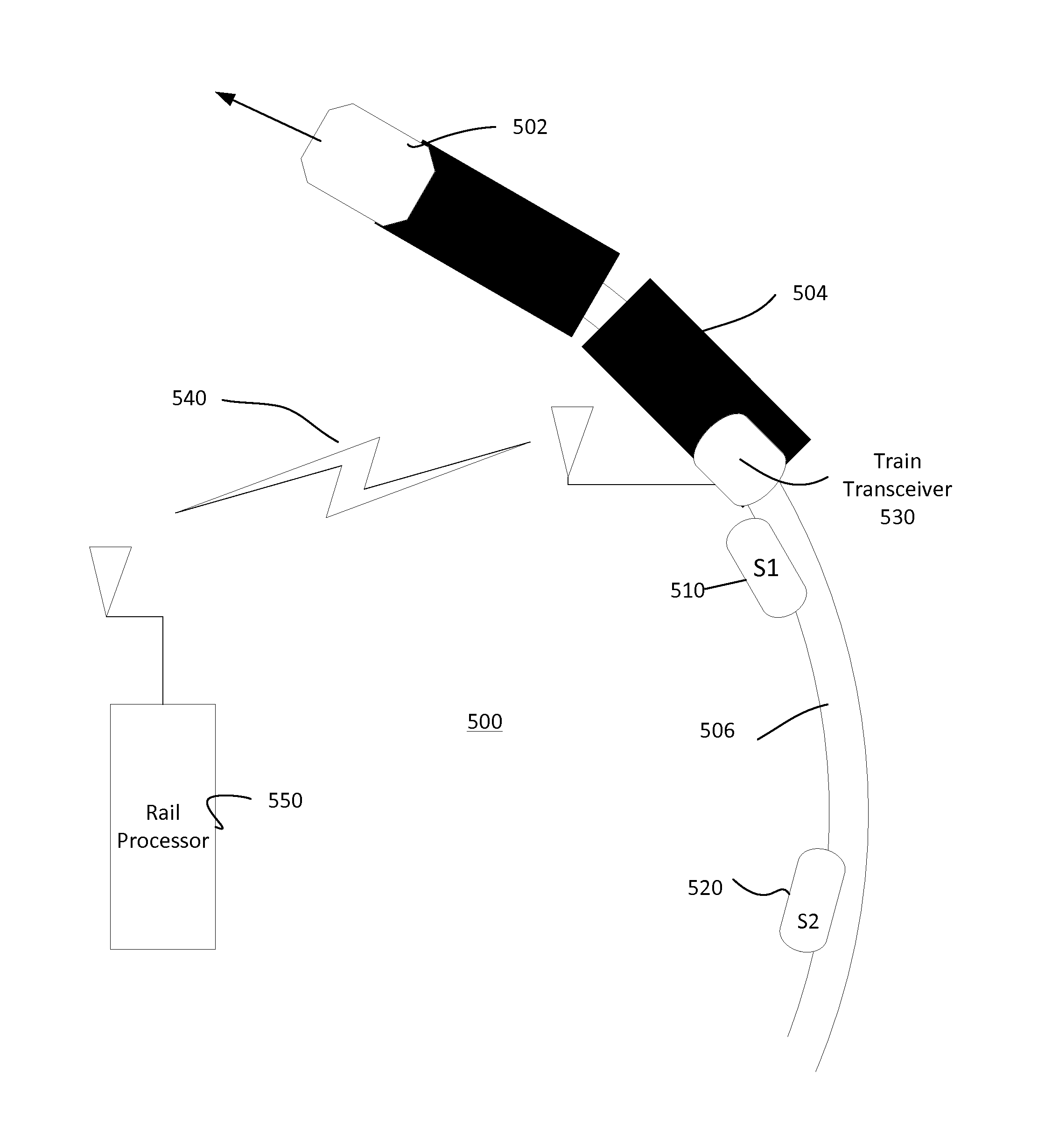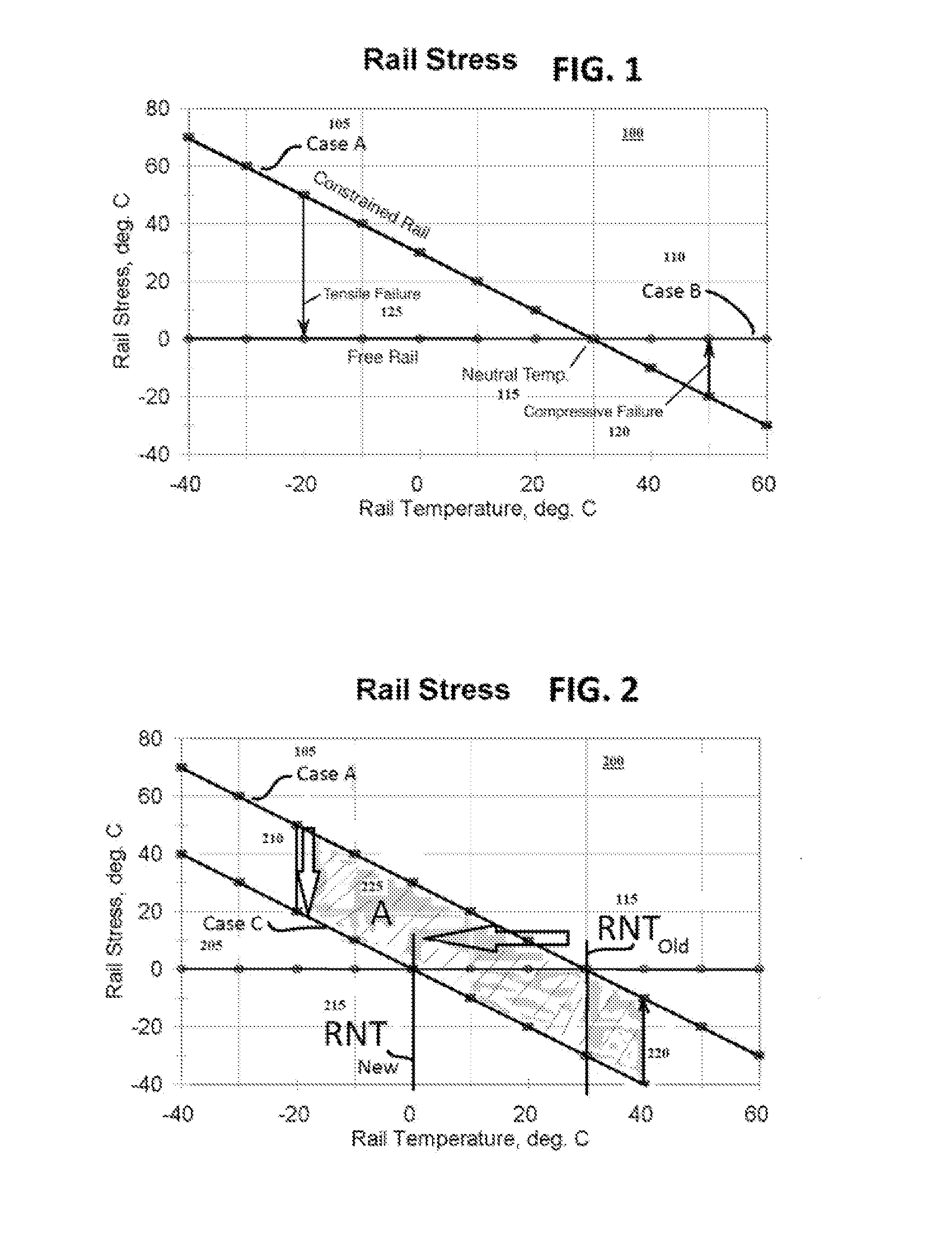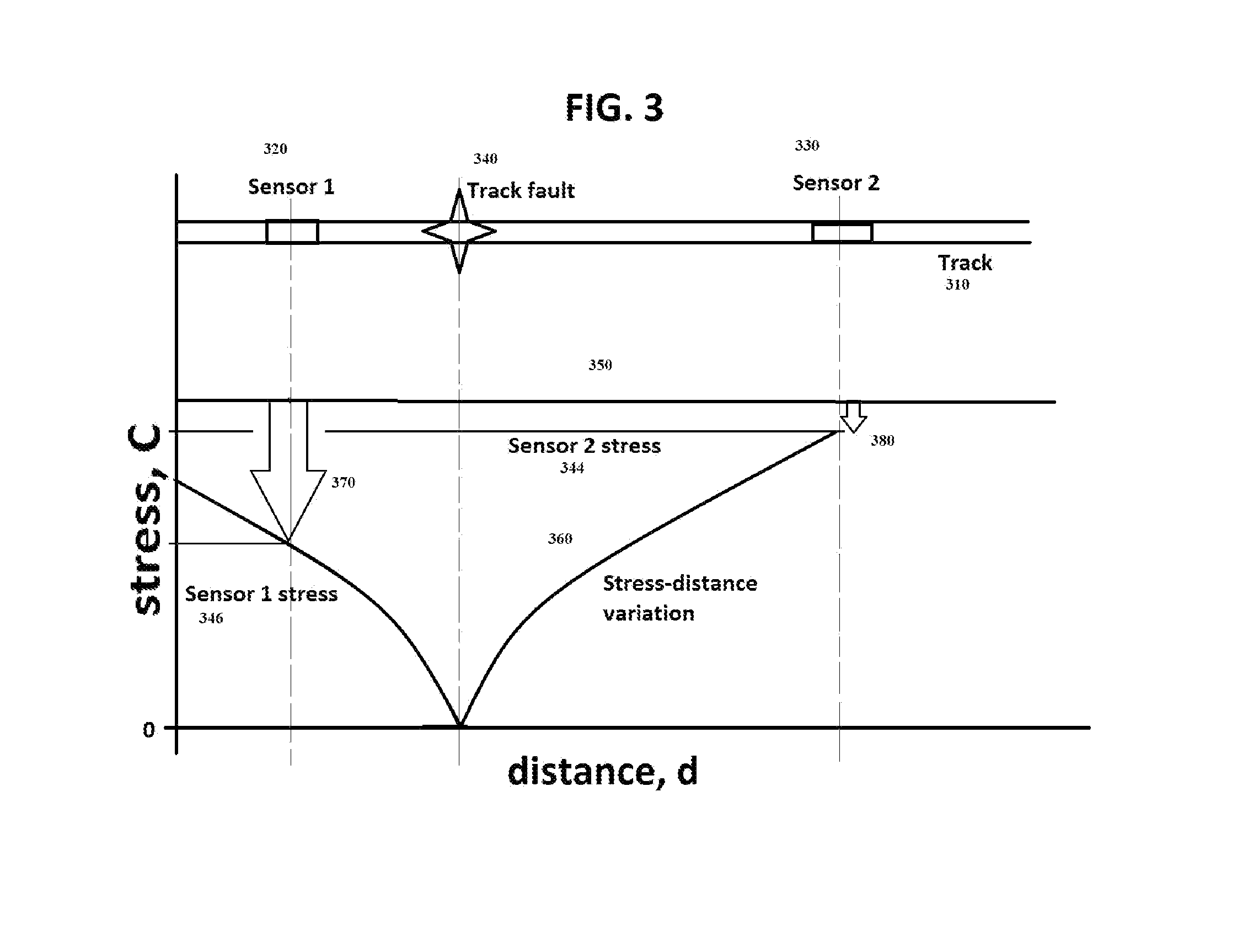Method and apparatus for detecting track failure
a technology of track failure and detection method, applied in the direction of structural/machine measurement, material thermal analysis, material flaw investigation, etc., can solve problems such as rail failure alerts, and achieve the effect of quick identification of faults
- Summary
- Abstract
- Description
- Claims
- Application Information
AI Technical Summary
Benefits of technology
Problems solved by technology
Method used
Image
Examples
Embodiment Construction
[0026]Now with reference to the FIGUREs, if an array of data sensors is distributed along the rail track, the inventors have observed that any two adjacent sensors will detect a failure condition in the vicinity of the sensors. In prior systems, a single point failure of any one sensor may induce a jump of signal away from the RNT condition, which is counter to expectations. If the jump emulates the track failure, a false alarm might result. But if two sensors see the same jump condition at the same time, then there is a high probability that the jumps are valid alarms, even if the jumps are not of the same magnitude.
[0027]FIG. 3 illustrates the detection by two sensors 320, 330 of the same track fault 340, which is a rail break fault in this example. Prior to the fault, each of sensor 1320 and sensor 2330 are installed on track portion 310. Just prior to the fault, each of the sensors 320, 330 sense a similar stress in the rail at the then-existing track temperature. When the track...
PUM
| Property | Measurement | Unit |
|---|---|---|
| time | aaaaa | aaaaa |
| longitudinal stress | aaaaa | aaaaa |
| temperature | aaaaa | aaaaa |
Abstract
Description
Claims
Application Information
 Login to View More
Login to View More - R&D
- Intellectual Property
- Life Sciences
- Materials
- Tech Scout
- Unparalleled Data Quality
- Higher Quality Content
- 60% Fewer Hallucinations
Browse by: Latest US Patents, China's latest patents, Technical Efficacy Thesaurus, Application Domain, Technology Topic, Popular Technical Reports.
© 2025 PatSnap. All rights reserved.Legal|Privacy policy|Modern Slavery Act Transparency Statement|Sitemap|About US| Contact US: help@patsnap.com



